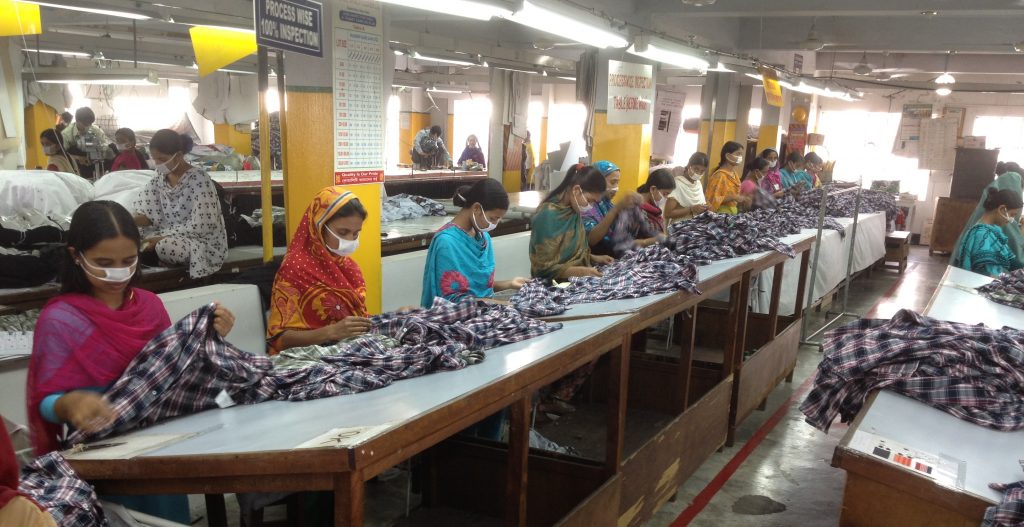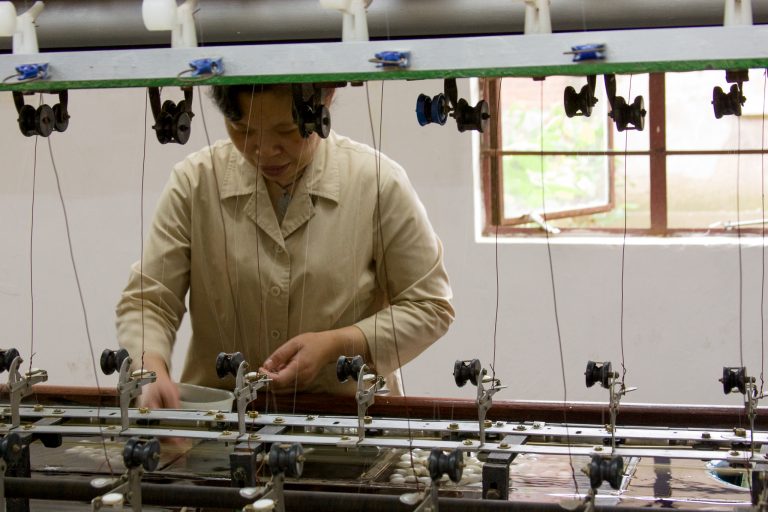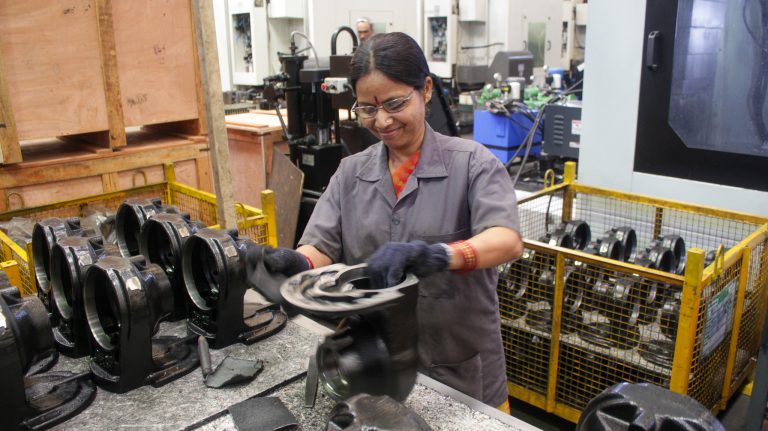Written by Megha Nath and Hurrain

As countries and industries across the globe are ramping up their decarbonization efforts, it is imperative they prioritize gender-equitable decarbonization strategies. This is the most advantageous path forward to achieve climate action goals.
The ambitious climate action targets set during the United Nations’ 26th Conference of the Parties (COP26), one of the largest climate change conferences in the world, will be reviewed and accelerated at this year’s COP27. It is crucial that structural inequities, such as gender inequality, are not perpetuated and do not permeate newly-constructed, clean technology systems and sustainable practices. Due to the multifaceted nature of gender inequity and its intersectionality with race, caste, religion, geography, culture, and socioeconomic class, the importance of seeking gender equity goes beyond merely fulfilling social and moral obligations.
Recent research demonstrates the value of gender equality and higher female participation in the workforce (Mckinsey, 2015; ILO, 2020). Data also establishes that undertaking decarbonization with a gender-equity lens leads to better economic growth, productivity, creativity, and holistic decision-making for climate action (Mavisakalyan et. al., 2019). This holds true especially within the global south where a significant majority of people who are disproportionately affected by climate change are located. Gender-equitable decarbonization processes can be leveraged in the global south to boost economic development by utilizing the untapped potential of unemployed women who are eligible to join the labor force (ILO, 2022).
Bridging the Gap Between Gender Equity and Decarbonization
Gender equity and decarbonization conversations are often viewed as mutually exclusive. Climate experts and practitioners limit themselves in how they strategize and design decarbonization pathways by not considering the intersectional benefits of women’s participation and decision making in the equation. Gender-equitable decarbonization is a necessary prerequisite for achieving a low-carbon, sustainable future. Introducing gender-equity principles to the work of climate experts through collaboration with gender equity experts are conversations that need to be held on all international climate action platforms to expand sustainable and low-carbon operations.
Including a gender equity perspective while creating decarbonization strategies and frameworks is a demanding endeavor with many variables. This challenge, combined with a lack of published research on the subject, may sometimes blur the lines between myths and facts about gender-equitable decarbonization. In addition, existing research on the relationship between gender equity and decarbonization is underappreciated in its significance.
1. Gender-equitable decarbonization can solely be achieved by ensuring higher women's participation in the workforce, i.e. gender equality in numbers of workers.
Gender-equitable decarbonization requires:
- Women-friendly infrastructure and systems;
- Clean technology design with ergonomic considerations for women; and
- Equal opportunity for women to hold leadership and decision-making positions.
Women comprise 60-70% of the total labor force in India’s textile industry, however, they are limited to low-productivity roles, i.e., unskilled and repetitive labor positions. Despite research finding that female supervisors use 33% less unauthorized leave, have half the attrition rate, and utilize 60% less overtime than their male counterparts, the majority of supervisors in the textile industry are still male (IDR, 2021).
2. Hiring women in workforce supervisory roles (e.g., human resources managers) reduces biases towards women workers, promoting gender-equal workplaces.
Eight out of 10 female HR managers believe women workers lack aspirations or are unfit for promotions due to domestic pressures (Institute for Sustainable Communities primary research, manuscript under preparation, 2022)
Women supervisors hold similar gender stereotypes and biases as men if they are not sensitized toward gender equality principles (PDF). These biases include assumptions that women are unfit for lifting certain weights or operating heavy machinery and are, therefore, more suitable for desk jobs. As few as 1 in 9 female HR managers believe that women should work night shifts and be provided a safe environment during that time. Two in 9 female HR supervisors believe that it is advantageous to hire unmarried women to save the company gratuity bonuses and maternity costs. (Institute for Sustainable Communities primary research, ISC manuscript under preparation, 2022). Women are often subjected to a “motherhood penalty,” the belief that they are fundamentally less committed to their careers because they are actively parenting. Women’s careers at all levels are hindered or derailed because of unfair assumptions, unhelpful attention, and unequal access (Harvard Business Review, 2022).

3. Women are not as fast and efficient as men and are not as productive in factories.
Nine out of 10 small and medium enterprise owners say that women work just as efficiently as men and show even better productivity in some cases (Institute for Sustainable Communities primary research, ISC manuscript under preparation, 2022).
Research has shown that women have lower attrition rates, take fewer breaks from work, focus more on their jobs, and make fewer errors in manufacturing than men. For organizations with females comprising the majority of their workforce (more than 50%), the attrition rates were observed to be extremely low (less than 8%). In a garment factory in Noida, India, data analysis for male and female production line efficiency showed that the female production lines led by female supervisors had better production rates (Institute for Sustainable Communities primary research, ISC manuscript under preparation, 2022).
4. The renewable energy sector is more gender-equitable than the oil and gas sector.
One in three jobs is held by women in the renewable energy sector, but these are predominantly administrative positions.

Statistically, the renewable energy sector is more gender equitable than the oil and gas sector, where only one in five jobs are held by women. But in the renewable energy sector, women’s participation is predominantly in administrative positions rather than STEM-related jobs furthering existing gender biases. According to survey data from the International Renewable Energy Agency (IRENA), the proportion of women in STEM jobs is 28% compared to 45% in administrative jobs (IRENA, 2019). |
5. Women are unable to champion climate action due to their lack of understanding of climate science.
Women’s leadership in decision-making shows a six-fold increase in the stringency of a country’s climate change policies (Mavisakalyan et. al., 2019).
Research shows increased participation by women in industry and policy-making facilitates climate action. A study on U.S. high-tech firms showed that gender diversity positively impacts the environmental performance of companies through corporate social responsibility and governance, specifically noting that female directors and executives improve board efficiency and enhance environmental performance (Al- Najjar et. al., 2022)
6. Lack of climate tech knowledge is the primary reason fewer women entrepreneurs exist in developing countries.
Unfavorable financial policies and discriminatory property laws are two leading reasons that contribute to the low number of women entrepreneurs in climate technology.
Recent studies show that investments in companies founded or led by women are relatively low with investments of only 2% of venture capital funding, given to women-founded start-ups in the US (WEF, 2021). In 2019, only 11% of seed capital was directed toward companies with women in their founding teams (WEF, 2021).
Additionally, WEF noted that companies formed by women often employ 2.5 times as many women as companies started by men, therefore boosting female entrepreneurs and opening up more options for (green) employment for women.
From an economic perspective, increasing gender equity can boost the region’s GDP (Mckinsey, 2015). This is even more beneficial for regions with higher gender gaps like the global south, where the majority of working-age women are still an untapped resource (ILO, 2022). However, we have seen from past experience that an increase in women’s participation in the workforce alone does not equate to an increase in gender equity (Our World in Data, 2018).
Decarbonization efforts can be a broad platform for developing nations to remedy structural inequities of the past and leapfrog to a more gender-equitable decarbonized ecosystem. The Institute for Sustainable Communities is deeply committed to this evolution. Working with local and state government agencies, the private sector and community influencers, ISC’s Accelerating Clean Equitable (ACE) Manufacturing program aims to decarbonize Indian Small and Medium Enterprises (SMEs) through clean tech adoption. We leverage this moment of transition to integrate gender equity principles into traditional systems by working with our multi-sector collaborators. The goal is to prepare and advance India’s manufacturing sector, the largest employer and its backbone, for a gender-equitable decarbonized future.
